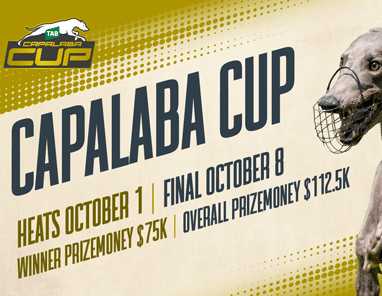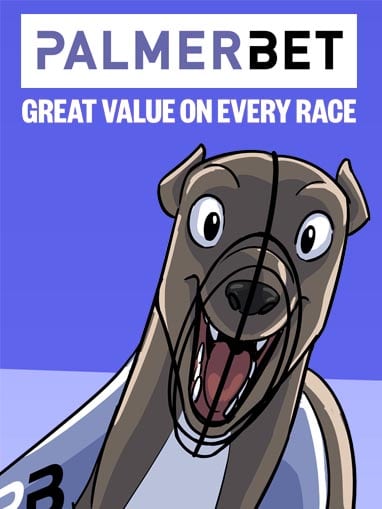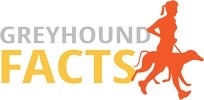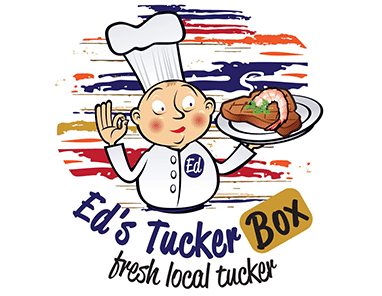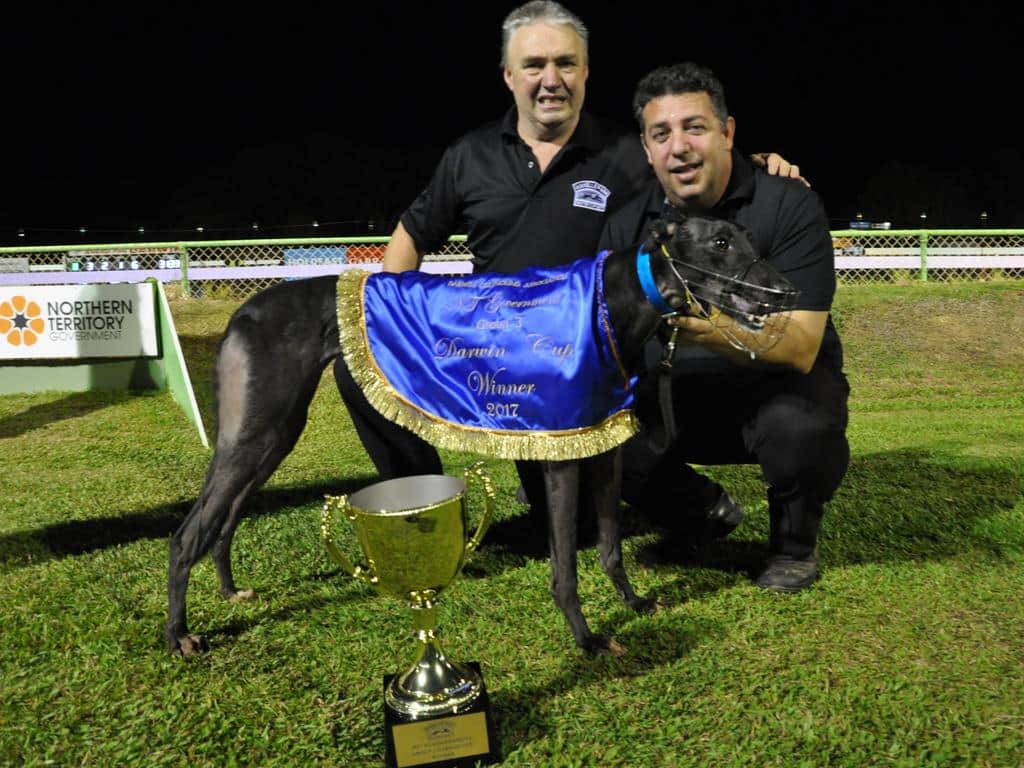
Caption: 2017 Darwin Cup-winning trainers Brian Kelleher and Tom Tzouvelis with winning bitch Off And On. (Photo: Josh Spasaro)
By TOM TZOUVELIS
BEFORE I get into giving my insight into the ways and means of embracing greyhound racing, I have to tell a story … a story I’m a bit embarrassed to tell, but one all newcomers to the industry should take on board.
It stems back to 2001 when I was 26.
My family had been involved in greyhound racing since I was a kid. We’d had a bit of success and I was also given a huge opportunity to train some dogs for Paul Wheeler.
I was desperate to learn as much as I could and Paul understood this. He asked if I would like to spend some time with his then No.1 trainer Graeme Bate. Naturally, I jumped at the chance.
It was the week of the Melbourne Cup and Graham had Hail A Harley and Suellen Bale in the Cup final.
I’d been in Melbourne with Batesy for a day. I was pretty full of myself. During the first day Graham and his staff were doing something and I put my two cents’ worth in, questioning what was being done.
Batesy turned to me and said: “Do you want to tell us how to do this, or are you here to learn how WE do it?”
He really put me in my place and it was a lesson instantly learned. It has been my desire in greyhound racing ever since to learn as much as I could and this is the very first piece of advice I have for anyone wanting to embrace racing greyhounds.
I have ALWAYS been someone who wanted to pick the brains of the best trainers, vets, muscle men … you name it. All with the purpose of building my knowledge. That old adage of “you never stop learning” is so, so right.
As a 14-year-old I would head out to the kennels of Bob Glindemann every weekend to help. His training method was to walk out in a 250m by 30m paddock with four or five dogs at a time and let them do their thing. They would gallop hard and get so, so fit.
As a 16-year-old I approached Tony Zammit to come and help out, all the time learning.
My dad was a backyard trainer, but I wanted to learn how the professionals went about their job.
Tony and his brother Michael galloped up their 350m straight, handslipping the dogs every day except the days immmediately after and before a race.
I also got to visit with Richie Dean who was big on interval training. He would put his race dogs up his straight track twice.
Over in WA, I got to stay with Linda Britton and she worked her dogs via a car driving beside the straight.
What all this taught me was that my dogs were not fit enough. These professionals developed an incredible degree of fitness in their dogs.
Tony Zammit told me the harder you work a greyhound, the fewer injuries you get. Tony’s dog hardly ever lost a race on fitness.
But it also told me that it didn’t matter what way you worked a dog, as long as it got to a level of fitness. Batesy instigated the competition runs and so many trainers, especially in Victoria, train that way.
When I see all those trainers who only ever run their dogs over 288m or 300m week in week out, I think to myself they should spend some time with one of the professional trainers to get an insight into just how fit you can get a dog.
That’s not to say, a complete reversal cannot work. I have an instance of just that. It involves a dog called One Giant Leap. Mick Zammit trained him for Graham “Hula” Haswell. Barry Dull eventually got him. Neither could get him to go. He would trial anything but not do it is races.
I bought him from Hula for $500, bucked the training trend and put him in the competition runs by himself.
It worked. He won five of eight races for us and we sold him to Victoria.
The moral of the story is, find a top trainer, witness their training routine and learn a new dimension of getting dogs fit.
I worked out pretty quickly that the way to the best dogs was buy the best-bred pups and this is a piece of advice I cannot stress more highly.
We were buying Golden Fox pups from Dennis Reid for $5000 in the 1990s; probably $15,000 pups today. My advice is to buy a few new pups every three or four months to always have something coming through.
As you have success … upgrade. We have done well over all those years doing just this.
Buy into pups from a Group performing bitch.
What we have also found is that the breed needs an outcross from time to time. Outcross bloodlines allow a sturdier dogs to come along.
US stud dogs put in stronger wrists, metacarpals, hocks. Molotov’s progeny had huge chests and looked like bulldogs. And outcrossed dogs seem to get more starts.
Way back in the early days, we got a bitch called Ruby West whose mother was an Irish bitch. She’d had a litter by Pretty Fearless that produced Brad Mulvihill’s good race dog Night Train. When we got her we put her to Pretty Fearless’s son Eureka Man and got Western Marshal.
Western Marshal won the Dapto Classic worth $100,000 and behind us were a heap of great trainers including Dennis Reid who had the runner-up.
I have also made it my business to learn to check greyhounds. Checking greyhounds for injuries is an art form being lost.
When I first started Brian Roberts, John Murray, Graham Beh and the great Mick Marlow were all around.
I would spend hours with John Murray and Mick Marlow watching them check over dogs. Mick was fantastic in what he showed me. I loved spending time with Ned Bryant, a genius dog man.
For budding trainers, I cannot emphasise how much patience is a virtue in this industry.
Our pups are educated on as many tracks as we can get to – Albion Park, Ipswich, Lismore, Casino, Grafton – and we build them up from 300m to 500m over 12 weeks before starting them.
Tony Zammit taught me this all those years ago.
Paul Wheeler and Dennis Reid gave us an insight into rearing pups.
And legends like Paul Cauchi need to be embraced by the industry. He has forgotten more than most know and is one of the nicest people anyone could meet.
So what advice can someone take from me, Tom Tzouvelis?
Get an insight into training from the very, very best trainers. Their dogs are supreme athletes, with the ultimate fitness level. Rear them right, use patience getting them ready to race, and make sure they are checked out regularly.
AND, make sure you buy the best pups you can afford.
It’s that easy!



